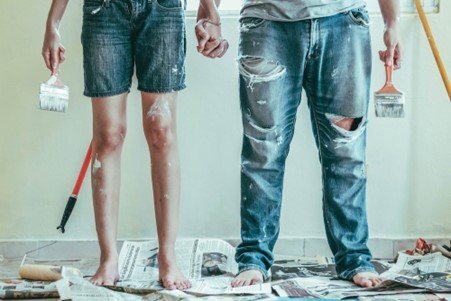DIY is something that practically every household in the UK will come across at some point or other. If you have ever attempted to fix a kitchen cabinet, or put up a shelf by yourself, congratulations: you are officially a DIYer!
DIY is extremely wide-ranging in scope, as people attempt to fill the boots of experienced handymen in keeping their house well-maintained. We all interact with DIY differently, too, giving rise to some differing archetypes of the ‘DIYer’. What kind of DIYer are you?
Growth in Popularity
Though DIY is part of the fabric when it comes to maintaining a home, it enjoys varying degrees of enthusiasm across demographics. There are those that would prefer to never touch a screwdriver in their lives, and others that take great pleasure in owning tool boxes filled to the brim with well-used tools and useful equipment.
In recent years, though, DIY has seen an overall increase in ‘popularity’, so to speak. The coronavirus pandemic kept many people on furlough and indoors, leading many to take up the DIY tasks they’d been putting off – and resulting in a huge boost to the sector as a whole.
The Different Kinds of DIYer
The Complete Beginner
This describes a large majority of anyone who has engaged with DIY in the past. The complete beginner has had little experience with home improvement, past, perhaps, an afternoon spent battling with an IKEA flat-pack. They feel totally unprepared to attempt a shelf fitting, and will often defer to YouTube how-tos before committing to a decision.
The Overconfident
This is another kind of DIYer well-represented in households across the country. They may have successfully built a flat-pack bookcase before, and they may have helped their parents move house once. This, apparently, qualifies them to attempt large DIY projects with little experience and even less research. These DIYers are the most likely to burst a water main, and perhaps the most likely to visit A&E.
The Hobbyist
There are some for whom DIY is a raison d’etre. Learning new skills and trying out new ideas gives them life, and even if their results are not perfect, they are dedicated to trying! Of course, the hobbyist may be prone to DIYing where no DIYing need be done…
Tips for Improving Your Craft
Whatever your specific relationship to DIY, there are always ways to improve – though, if you suspect yourself to be the ‘overconfident’ type, these may apply more to you than to anyone else. For starters, a poor workman may always blame their tools, but sometimes the tools can be a barrier to growth. If you’re making do with blunt saws and underpowered drills, invest in some better equipment and watch your outcomes improve!
You should also never be afraid to ask for help. Doing a DIY project alone is not character-building, and you’re less likely to learn something without an expert on hand to give you pointers – whether in real life, or via a YouTube tutorial.


































